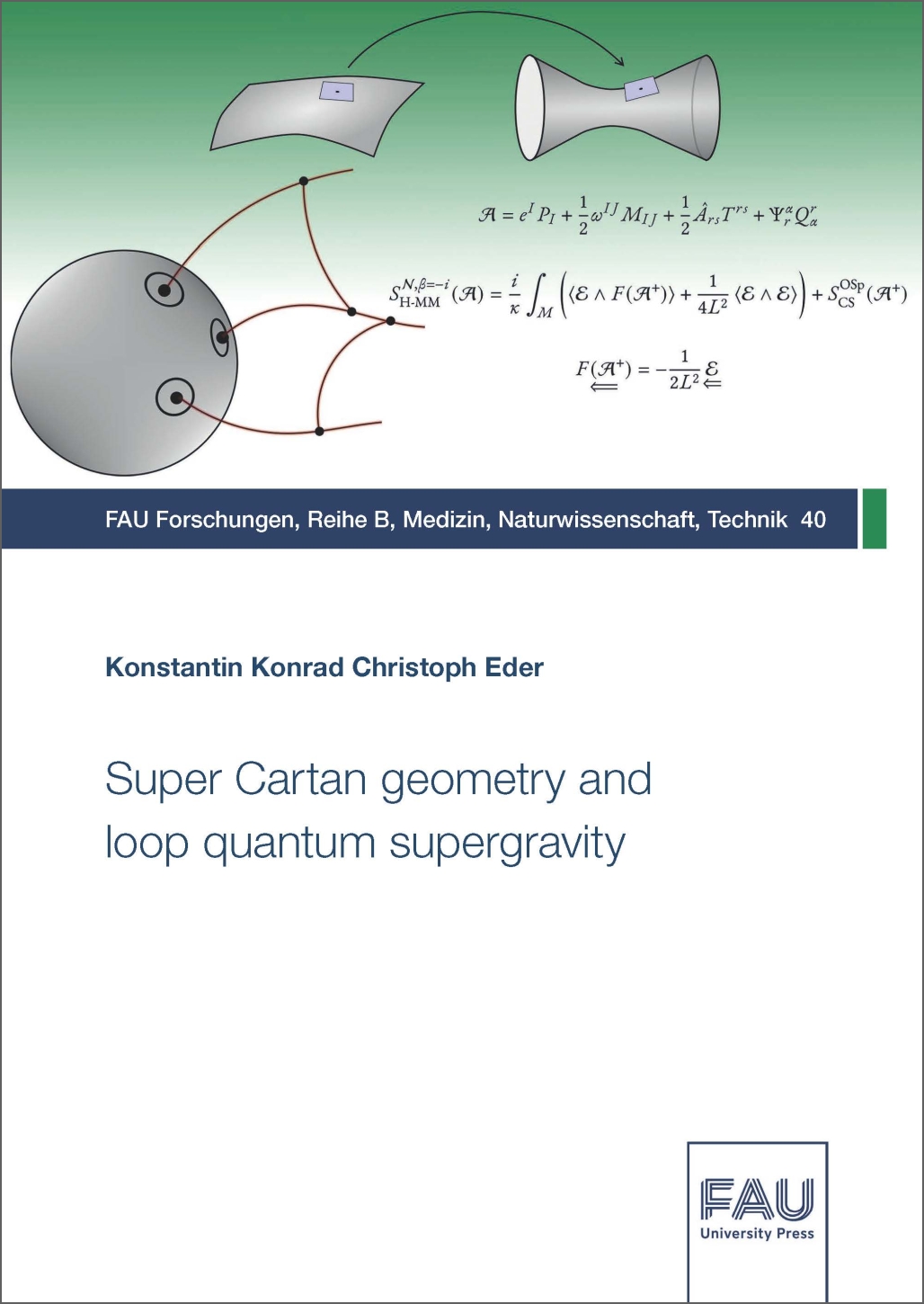Description
Superstring theory and loop quantum gravity (LQG) are promising approaches towards the formulation of a quantum theory of gravity. Superstring theory aims at unification of all fundamental forces of nature, predicting supersymmetry and even higher spacetime dimensions. LQG, on the other hand, takes a more conservative viewpoint by proposing new quantization techniques that take seriously the central principles of general relativity.
The goal of this work is to relate ideas from LQG and superstring theory by combining LQG with the concept of supersymmetry. To achieve this, the mathematical apparatus for a mathematically rigorous description of the underlying geometric structures of supergravity theories, i.e., supersymmetric extensions of Einstein’s theory of gravity, will be developed. Among other things, this approach leads to a reformulation of the theory in which (part of) supersymmetry manifests itself in terms of a gauge symmetry.
Using the interpretation of supergravity in terms of a super Cartan geometry, the Holst variant of the MacDowell-Mansouri action for (extended) AdS supergravity in D=4 for arbitrary values of the Barbero-Immirzi parameter - a free parameter of the theory - will be derived. Moreover, it will be demonstrated that these actions provide unique boundary terms that ensure local supersymmetry invariance at boundaries.
The chiral case is special: The action is invariant under an enlarged gauge symmetry, the boundary theory is a topological super Chern-Simons theory, and a chiral connection emerges that is the natural generalization of the Ashtekar connection to the supersymmetric context. Making use of the enlarged gauge symmetry, a quantization of the theory generalizing standard tools of LQG will be proposed.
These results provide a starting point for applications in the context of supersymmetric black holes and quantum cosmology. There, the enhanced gauge symmetry proves to be a promising tool which in the future may shed a lot of insights on how to relate results from these different approaches.


Reviews
There are no reviews yet.